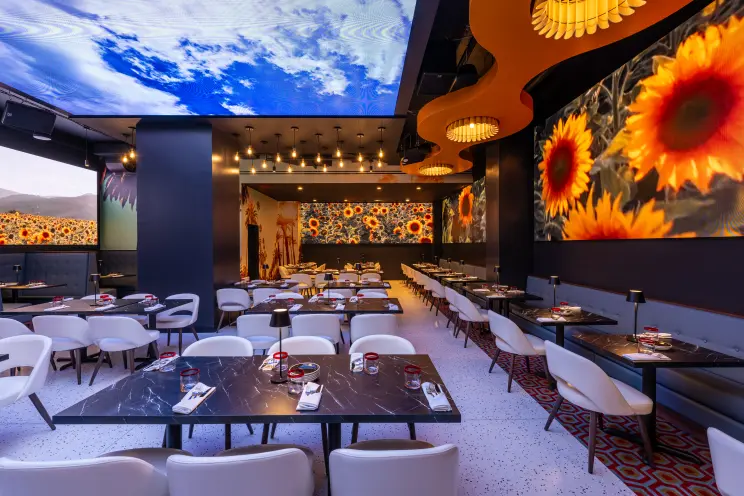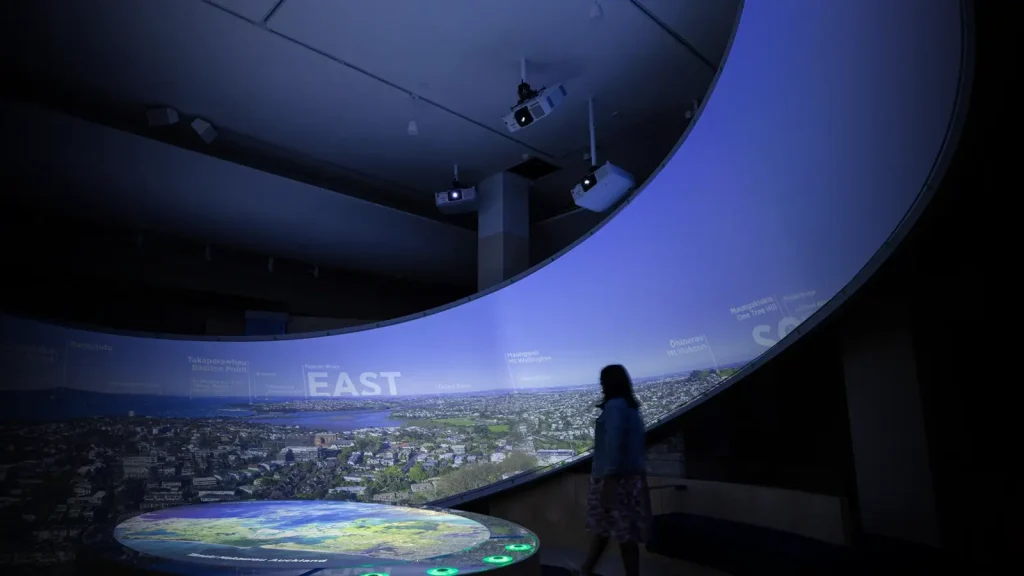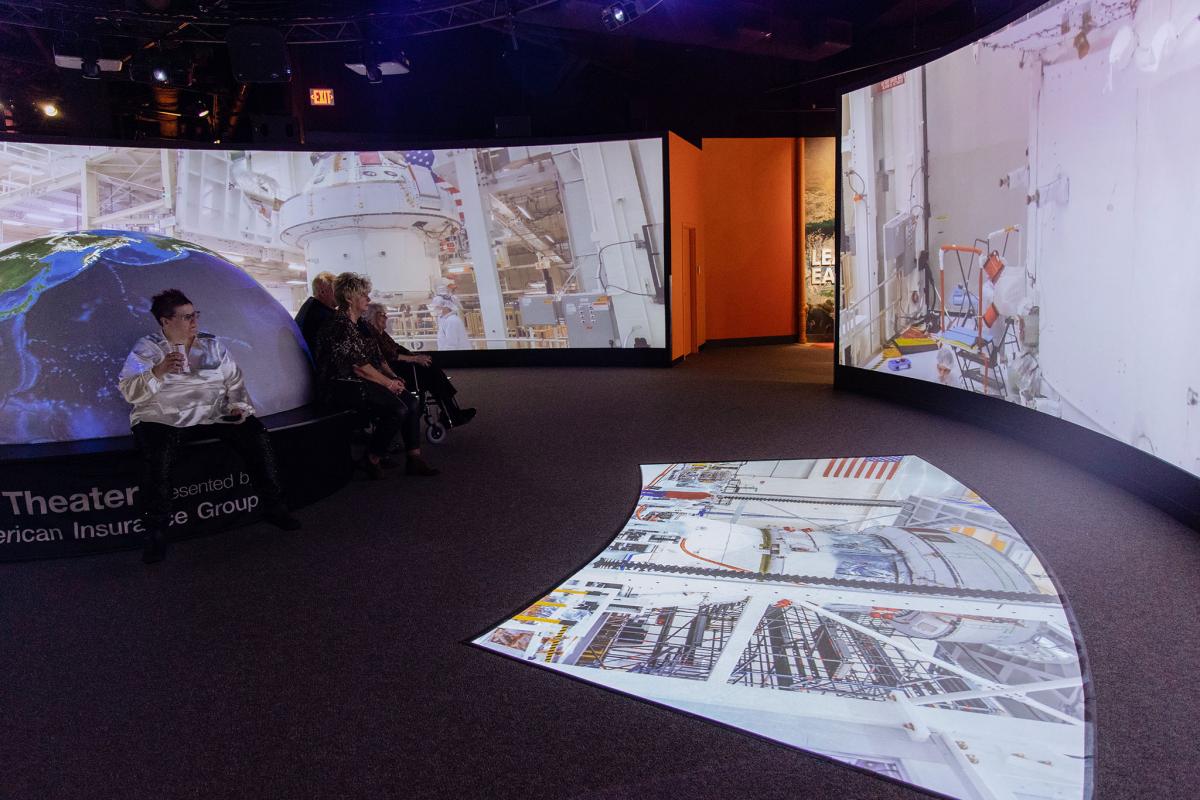

Museums are built around ideas. They preserve the past, interpret the present, and sometimes—when done well—they create moments of emotional connection that last far beyond the exhibit itself. But in an increasingly visual and digital world, museums face a growing challenge: how to present rich, complex stories to audiences with short attention spans and high visual expectations.
This isn’t just about attracting younger visitors or making exhibits “look modern.” It’s about relevance. And one of the most effective tools helping museums meet that challenge today is the LED display.
At SeeThruDisplays, we work with organizations that care deeply about how they present content. In the museum world, that means integrating technology that elevates—not distracts from—the core narrative. The rise of the LED display in museums isn’t about turning institutions into tech showcases. It’s about delivering clarity, immersion, and flexibility—without sacrificing the integrity of the space or the story.

Printed panels, framed labels, and video monitors have served museums well for decades. But they come with limitations—both physical and creative. Once printed, content is frozen. Screens are often confined to small, fixed formats. And in dim or bright gallery lighting, visuals are easily washed out or difficult to read.
An LED display in museums removes those constraints. It becomes a living surface—capable of showing video, motion graphics, rotating content, or live data feeds—all in crisp resolution and consistent brightness. That opens the door to exhibitions that can evolve in real time and adjust based on the audience, the moment, or even the room.
This isn’t about spectacle. It’s about giving curators and designers more tools to communicate well.
Space is always a constraint in galleries. You only have so many walls. When the story you’re telling is layered—say, an archaeological discovery with historical, political, and cultural dimensions—you need a medium that can support complexity without physical clutter.
We’ve seen how an LED display in museums solves this elegantly. One visual surface can switch between maps, timelines, restored footage, and high-resolution images—freeing the wall around it to hold objects or remain visually clean. You’re no longer asking visitors to walk across the room for context. It’s all there, changing as needed, without breaking the experience.
At SeeThruDisplays, we work closely with exhibit teams to build content strategies around these needs—so the display doesn’t just show information, it adds meaning.

Every museum has its own unique environment. Some galleries are flooded with natural light. Others are tightly controlled to protect artifacts. Either way, you need a display that performs consistently—without the downsides of projection systems or fragile commercial screens.
An LED display in museums delivers high brightness, sharp contrast, and true-to-color images under virtually any lighting condition. There’s no projector alignment, no bulbs to replace, no image degradation over time. You get something that works on opening day—and still looks great on day 1,000.
Our LED systems are engineered for endurance. We’ve installed in high-traffic lobbies, humidity-controlled galleries, and temporary exhibition spaces alike. They’re modular, serviceable, and surprisingly energy-efficient for 24/7 display.
For many museums, especially science centers and cultural institutions, education isn’t an add-on—it’s the reason they exist. But good education requires clear communication, and often, that communication needs to adapt across audiences. Visitors may speak different languages, come from different learning levels, or simply want to engage in different ways.
That’s where the LED display in museums starts to show its real value. One system can present multilingual captions, toggled layers of information, or real-time explanations—all while keeping the physical layout clean and visitor-friendly.
When paired with touchscreen input, motion sensors, or simple scheduling software, the same LED wall can serve school groups in the morning, adult learners in the afternoon, and special event guests at night—without needing a single content reprint.
We understand how important the physical space is in a museum. Sometimes the building itself is a work of art—or at least a careful curation of architectural intention. Adding large-scale digital displays can feel intrusive if not handled with care.
At SeeThruDisplays, we prioritize integration. We’ve developed slim-profile systems that blend into stone, wood, or steel finishes without disrupting the room’s atmosphere. And we work with exhibit designers and fabrication teams early—so our technology complements, rather than competes with, the spatial narrative.
This matters. A well-placed LED display in museums should feel like it belongs there—as natural as the cases and lighting around it.
Permanent exhibits change. Temporary exhibits rotate. And special installations often require rapid turnaround with minimal downtime. One of the major benefits of installing an LED display in museums is that you don’t have to start from scratch when your story shifts.
Content can be updated remotely, layered seasonally, or reprogrammed between events. That means your digital canvas is always in sync with your mission—whether you’re highlighting a new acquisition, addressing current events, or simply refreshing your presentation to keep visitors coming back.
We provide support that goes beyond installation. From CMS integration to training your team on content workflows, we’re here to make sure the technology stays easy to use and evolves with your needs.

Museums don’t just preserve the past. They shape how we understand it—and how we connect it to the present. As visitor expectations evolve, the tools we use to tell stories have to evolve too.
An LED display in museums isn’t about making exhibits flashy. It’s about making them clearer, more engaging, and more adaptive. It’s about giving curators control, educators options, and visitors a richer, deeper experience.
At SeeThruDisplays, we build LED solutions that respect the mission of museums while pushing their creative potential forward. If your institution is thinking about how to modernize its exhibitions—or future-proof them—we’d love to help you explore what’s possible.
Because when the content matters, the display should never get in the way.